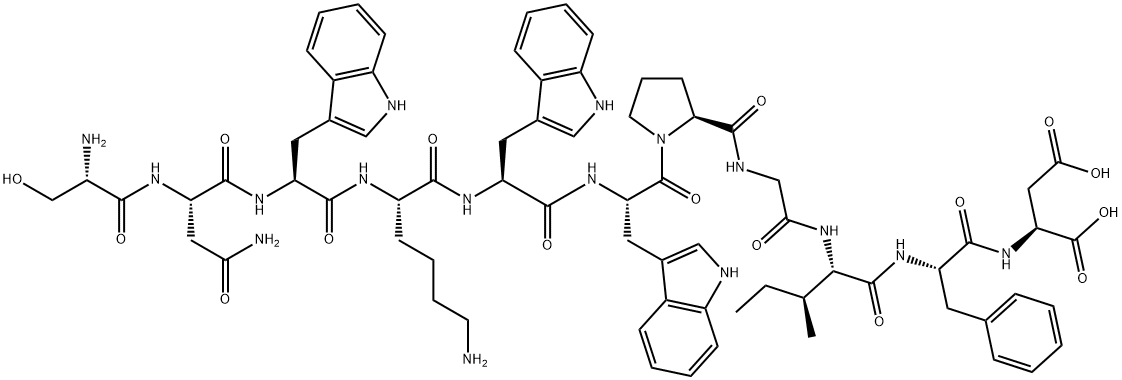Uses
QBP1, an oligopeptide inhibitor of polyglutamine protein aggregation, may be used to study the physicochemical processes of polyglutamine-dependent protein misfolding, aggregation and precipitation. QBP1 may be used to study the role polyglutamine protein aggregation in causing or aggravating polyglutamine diseases including neurodegenerative diseases such as Huntingtonμs dentatorubral pallidoluysian atrophy, spinobulbar muscular atrophy, and spinocerebellar ataxia.
Biological Activity
QBP1 is an inhibitor of polyglutamine protein aggregation and cell death. QBP1 inhibits polyglutamine aggregation in COS-7 cells at a concentration of 25 μMas shown by complete inhibition of thioredoxin-Q62 aggregation assayed by turbidity at 405 nm. QBP1 reduces cell death of these cells by 50% and increases median life span from 5.5-52 days in Drosophilla melanogaster th at expresses the expanded polyglutamine; can be shortened to 8 amino acids (Trp-Ley-Trp-Trp-Pro-Gly-Ile-Phe) without the loss of ability to inhibit polyglutamine aggregation. Several inherited neurodegenerative diseasesHuntingtonμs dentatorubral pallidoluysian atrophyspinobulbar muscular atrophyand spinocerebellar ataxia are caused by the expanded CAG repeats in the coding region of the geneleading to accumulation of polyglutamine.

